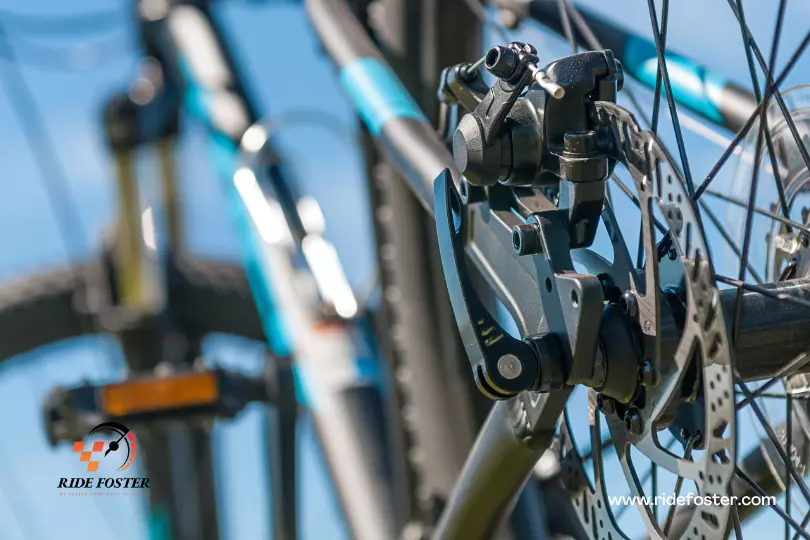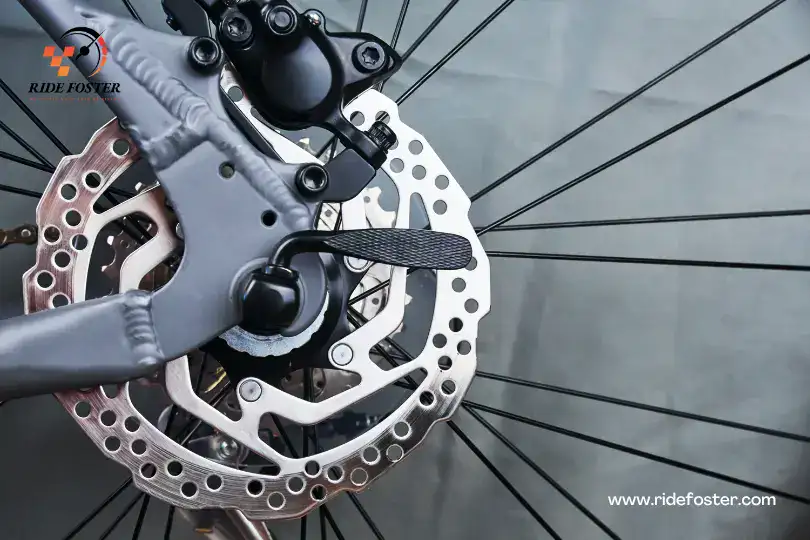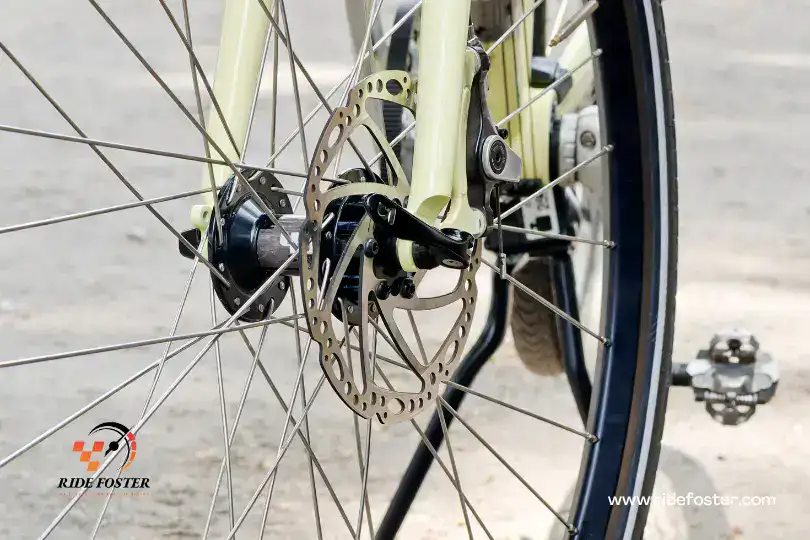
Table of Contents
I. Introduction
When it comes to road bikes, one may notice that they typically use rim brakes instead of disc brakes.
This may lead to the question of why road bikes have traditionally favored rim brakes over disc brakes.
To understand this, it is important to first understand the difference between disc brakes and rim brakes and the reasons behind their respective use in the world of road biking.
This article will explore the reasons why road bikes have traditionally used rim brakes and shed some light on this interesting topic.
II. Weight Considerations
The Impact of Weight on Road Bike Performance
The weight of a road bike is a critical factor that can significantly impact its performance.
Lighter bikes generally have better acceleration, climbing ability, and overall agility.
Road bike manufacturers prioritize reducing weight to optimize performance and enhance the rider’s experience.
Why Disc Brakes Add Extra Weight to Road Bikes
Disc brakes, compared to traditional rim brakes, tend to add extra weight to road bikes.
The disc rotors, calipers, and mounting hardware used in disc brakes contribute to this additional weight.
While advancements in disc brake technology have made them lighter over the years, the weight consideration is still a factor that influences the disc brake adoption in road bikes.

III. Aerodynamics
The Importance of Aerodynamics in Road Cycling
Aerodynamics plays a crucial role in road cycling, as reducing air resistance can significantly improve a cyclist’s speed and efficiency.
In the pursuit of achieving optimal aerodynamics, road bike manufacturers have carefully designed the frames, wheels, and components of their bikes to minimize drag and maximize speed.
Traditional rim brakes have been the preferred choice for road bikes due to their aerodynamic advantage, as they create less turbulence and have a more streamlined profile compared to disc brakes.
How Disc Brakes Affect the Aerodynamic Efficiency of Road Bikes
Disc brakes, while highly effective in providing superior stopping power and modulation, do have a noticeable impact on the aerodynamic efficiency of road bikes.
The disc brake calipers and rotors create additional surface area and increase the overall drag of the bike.
This increase in drag can lead to a decrease in speed and efficiency, especially when riding at high speeds or in windy conditions.
As a result, many road bike manufacturers and professional cyclists have opted to stick with rim brakes for their bikes to maintain the optimal aerodynamic profile.

IV. Tradition and Familiarity
The Historical Use of Rim Brakes in Road Cycling
Rim brakes have been the standard braking system for road bikes for decades.
This traditional braking mechanism involves pads that grip the rim of the wheel to slow down or stop the bike.
The design has been refined over the years, and it is a familiar and reliable system that many cyclists are comfortable with.
Resistance to Change and Familiarity Bias in the Cycling Industry
The cycling industry has been slow to adopt disc brakes in road bikes due to a variety of reasons, including resistance to change and familiarity bias.
Some cyclists and manufacturers have been hesitant to switch to disc brakes because they are accustomed to the performance and feel of rim brakes.
Additionally, the cost of transitioning to disc brake technology and concerns about compatibility with existing components have also contributed to the slow adoption rate.
Overall, the historical use of rim brakes in road cycling and the resistance to change and familiarity bias in the cycling industry have played a significant role in why road bikes have not widely embraced disc brakes.
However, with advancements in technology and increasing interest from cyclists, disc brakes are slowly gaining popularity in the road cycling community.

V. Maintenance and Repair
Ease of Maintenance and Repair with Rim Brakes
Rim brakes are known for their simplicity when it comes to maintenance and repair.
They are easier to adjust and replace, as they don’t require specialized tools or expertise.
Most bike shops are familiar with rim brakes and can easily perform any necessary repairs or adjustments.
In addition, rim brake pads are typically more affordable and widely available, making it convenient for cyclists to replace them when needed.
The Complexity and Cost of Maintaining and Repairing Disc Brakes
On the other hand, disc brakes are more complex and require specialized tools and knowledge for maintenance and repair.
The calipers, rotors, and brake pads of disc brakes need periodic inspection and adjustment to ensure optimal performance.
In some cases, components may need to be replaced, which can be more expensive compared to rim brakes.
Not all bike shops may be equipped or experienced in working with disc brakes, leading to more limited options for servicing.
VI. Performance and Modulation
The Advantage of Rim Brakes in Terms of Performance and Modulation
One of the reasons road bikes continue to use rim brakes instead of disc brakes is the advantage they offer in terms of performance and modulation.
Rim brakes have been refined over the years and are designed to provide precise control and modulation of braking power.
This allows riders to finely tune their braking and make small adjustments when needed.
Rim brakes also offer a lighter overall weight compared to disc brakes, which can be advantageous for road racing and climbing.
While disc brakes offer superior stopping power in certain conditions, the performance and modulation of rim brakes make them a suitable choice for many road cyclists.
See Related:
IX. Conclusion
Understanding the Reasons Behind Road Bikes’ Reliance on Rim Brakes
In conclusion, road bikes have traditionally used rim brakes due to several factors.
Rim brakes are lightweight, less expensive, and generally offer sufficient stopping power for road cycling.
Additionally, rim brakes are easier to maintain and repair, which is important for cyclists who may need to perform on-the-go fixes during long rides.
However, it’s worth noting that disc brakes are gaining popularity in the road cycling community, thanks to their superior braking performance, especially in wet conditions.
The decision between rim brakes and disc brakes ultimately depends on personal preference and specific cycling needs.
Considerations for Choosing the Right Braking System for Your Road Bike
When deciding between rim brakes and disc brakes for your road bike, keep the following considerations in mind:
- Riding conditions: If you frequently ride in wet or muddy conditions, disc brakes may offer better stopping power and control.
- Weight: Rim brakes are typically lighter than disc brakes, which may be a significant factor for competitive cyclists or those looking to reduce bike weight.
- Maintenance: Rim brakes are generally easier to maintain and repair, as they are simpler in design and less prone to issues like rotor warping.
- Cost: Rim brakes are often less expensive than disc brakes, making them a more budget-friendly option.
Ultimately, the choice between rim brakes and disc brakes comes down to personal preference and the specific demands of your road cycling adventures.
Consider your riding style, terrain, and budget before making a decision.
Sources:
- https://www.bikeradar.com/features/road-disc-brakes-everything-you-need-to-know/
- https://bicycles.stackexchange.com/questions/1500/why-are-disc-brakes-rare-on-road-bikes-circa-2010
- https://www.cyclingweekly.com/news/product-news/the-disc-brakes-debate-are-they-necessary-on-road-bikes-157272
- https://www.scott-sports.com/us/en/page/why-disc-brakes







![Can You Put Gravel Tires On a Road Bike? [Pros & Cons] Can You Put Gravel Tires On a Road Bike](https://www.ridefoster.com/wp-content/uploads/2022/11/Can-You-Put-Gravel-Tires-On-a-Road-Bike.webp)
Comments are closed.